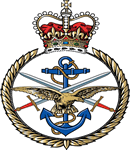Commemorated: | |||
| 1. Document: | New Zealand WW1 Masonic List | N.Z. | |
Awards & Titles: | |||
Early Life :
Husband of Mrs Mary Ellen nee Steel, having married in 1899.Like many around the time, it is possible that William had decided to move to New Zealand, perhaps with family in tow. It is assumed that because of the war, his wife moved back to more familiar territory in South Shields, using a c/o address. His address in New Zealand was Pownall Street, Masterton.
William was a Master Mariner, having received his Certificate of Competency as Master of a Foreign Going Ship on the 17th December, 1897. He had also received Certificate of "Extra Master" on the 20th May, 1901, also noting he had passed "Compass Deviation" component in March 1900.
He would certainly have been an experienced seaman by the time of the war, which makes the following account, appearing in the Sunderland Daily Echo and Shipping Gazette 30th March, 1912 all the more interesting:
"THISTLEROY JUDGMENT - Master and Chief Officer Exonerated - MISTAKEN LIGHTS - Judgment was delivered this afternoon in the Board of Trade inquiry into the loss of the Sunderland steamer Thistleroy, which was stranded and wrecked off the coast of South Carolina, U.S.A., on December 28th last.
Before replying to the questions submitted by the Board of Trade, the Chairman, Councillor Ritson, said the Court wished to say that the solicitor for the Board of Trade had rightly said that the allegations as to the master's insobriety could be entirely dismissed from consideration, as in the opinion of the Court there was no foundation whatever for any such allegations.
The Court found that safe and proper courses were set and due allowances made for tides and currents up to the time of sighting the lighthouse of Cape Lookbout, and that the master was justified in taking this light, seen at 5.10 p.m. on December 28th, to be the Cape Lookout Shoal Lightship, but knowing as he died the similarity of the two lights he would have done better to have checked the ship's position by the use of the lead. The stranding and loss of the vessel was caused by the light on Cape Lookout having been mistaken for that of the Shoal Lightship. The Court also found that the vessel was navigated with proper and seamanlike care except for the omission to verify by use of the lead the assumed position at the time the light was sighted on the day of stranding, but that the casualty was not caused by the wrongful act or default of either the master, William Constable Ferguson, or the chief officer, James Stewart Flett."
It is a possibility that this case prompted a review of his career leading to the decision to move abroad and start a new life, and perhaps a principal reason why William ended up serving in the Army and not in the Mercantile or Royal Naval subsidiaries.
Service Life:
Campaigns:
| Unit / Ship / Est.: New Zealand Rifle Brigade, N.Z.E.F |
Consolidated list of Riflemen from all battalions of the New Zealand Rifle Brigade. |
| Action : War Survivor |
Although many perished in times of national conflict and in the service of their country, many more survived including those interned as Prisoners of War. Stories of those who did survive are included as part of this site, especially those with high gallantry awards, those included against an external rolls of honour and those who had a distinguished career in wartime and military leaderhip.
Detail :
Enlisted on 29th May, 1915 for service with the 3rd and later the 2nd New Zealand Rifle Brigade, working with the Battalion Signallers, and spent 5 months training in New Zealand. Then served in Egypt from 1915 and with the Egyptian Expeditionary Force until 1916, when he entered the Western Front until 1918. He was discharged in 1918 to enter the Royal Naval Reserve after 2 years 277 days service. He attained the rank, in the Army, of Lance Corporal and had the regimental number 24/418.
He appears to have served aboard HMS Trent from 1st March 1918 and to have received a Temporary commission as Sub-Lieutenant on 31st August, 1918. But, by the end of the year he had been admitted to the R.N. Hospital, Chatham with "neurasthenia." By March of 1919, he had his commission terminated, which marks the end of his service.
Masonic :
| Type | Lodge Name and No. | Province/District : |
|---|---|---|
| Mother : | Hadrian No. 1970 E.C. | Durham |
Initiated | Passed | Raised |
7th May 1912 | 4th February 1913 | 8th April 1913 |
William was initiated in the pre-war period in 1913 whilst in South Shields as a Master Mariner. The contribution record shows that he was excluded after arrears under Rule 175, September 1915. It is clear at this time he had not only moved to New Zealand, but that he was involved with the war effort.
Source :
The project globally acknowledges the following as sources of information for research across the whole database:
- The Commonwealth War Graves Commission
- The (UK) National Archives
- Ancestry.co.uk - Genealogy, Family Trees & Family History online
- ugle.org.uk - The records of the United Grand Lodge of England including the Library and Museum of Freemasonry
Additional Source:
- Founder Researchers : Paul Masters & Mike McCarthy
- Researcher : Bruce Littley

